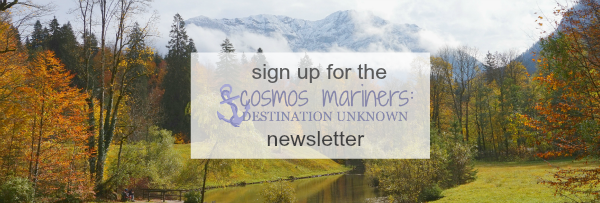A Tale of Two Castles: Neuschwanstein and Hohenschwangau
Even if you don't know the name of it, you've definitely seen pictures of it before. As one of the
world's most recognized castles, Neuschwanstein is a must-see stop on most people's visit to Füssen, Germany.
 |
| Neuschwanstein Castle |
 |
| Hohenschwangau, as seen from Neuschwanstein |
After getting our tickets for both castles, we tried to make our way to Hohenschwangau. I say tried since we weren't quite successful the first time. Britton spotted a horse and carriage under a sign that said "rides to castle," so (not thinking) we hopped on it...only to find out that the castle in reference was Neuschwanstein, not Hohenschwangau. We walked back down to the village and then climbed the many stairs up to the correct castle to finally start our day of tours.
 |
| Hohenschwangau |
No Happily Ever After Here
Hohenschwangau is the childhood home of King Ludwig II and Prince Otto, the two children of Maximilian and Marie. Of the two castles, it feels more like a home, and it's easy to imagine the king and queen entertaining in the rooms here. |
| Hohenschwangau |
He never married, and, as he grew older, he became more reclusive. In 1869, Ludwig began construction on Neuschwanstein (one of four major construction projects he had going at this time), a castle that he'd dreamed of building in that spot since he was a boy at Hohenschwangau.
 |
| Neuschwanstein peeking through the fog |
In the portion of Neuschwanstein that was finished, you'll be able to see the intricate details on every inch of every room. Ludwig was close friends with composer Richard Wagner, and you'll see references to Wagner's operas, including Tristan und Isolde, Parsifal, and Lohengrin in the expansive murals. Unlike Hohenschwangau, Neuschwanstein seems isolated, dark, and quiet. It's not hard to imagine the haunted Ludwig wandering the silent rooms by himself in the middle of the night (in his later years, he would often stay up all night and sleep all day, so as to avoid visitors).
At the age of 40, Ludwig was deemed to be mentally unwell and was taken from Neuschwanstein to Berg Castle so he could be watched. Just three days after arriving, Ludwig's body was found floating in the nearby lake next to the body of his supervising doctor.
The family difficulties extended to Ludwig's little brother as well.
Otto, as the second son, was sent into military service and served during the Austro-Prussian and Franco-Prussian Wars. As a direct result of his military service, Otto began to grow depressed and distant; he was ultimately deemed mentally ill and placed under the medical supervision of several doctors and his uncle Luitpold. Although Otto was declared king by the Bavarian cabinet after Ludwig's diagnosis of mental illness (and subsequent death), he wasn't ever able to rule, and his uncle Luitpold served as Prince Regent until Otto died.
So, by 1916, you have two deceased brothers and no direct heirs. Neuschwanstein was never finished and sat vacant for years until it was turned into the touring destination that it is today.
There are all sorts of theories about what exactly happened to Ludwig and Otto, as it's very possible that their mental illnesses were invented, exaggerated, or not treated properly for political gain. Ludwig's death in particular is highly suspicious, as he was a strong swimmer and likely wouldn't have drowned in the shallow water in which he was found.
Knowing all of that, it's strange to me that people look at Neuschwanstein at this fairy tale castle, as Ludwig's life was anything but a fairy tale. Walt Disney, who visited during the 1940s and then used it as inspiration for the castle that appears in Sleeping Beauty, is partially to blame for this, but there are many visitors who don't even consider the history of this area when they're putting Neuschwanstein on their itineraries.
 |
| Braving the rain as we trekked to Neuschwanstein |
Both castles are well worth a visit, and, if you're anywhere near Fussen, I highly recommend a stop. There are guided tours in multiple languages, including English and German, throughout the day.
Practical Things to Know Before You Visit
Know How to Get to the CastlesWhile the only way up to Hohenschwangau is via your own two feet, you've got some options when it comes to getting to Neuschwanstein. You can walk, but it's quite a long trek, and there's a steady incline the entire 20-30 minute way up. You also have the option of taking a horse and carriage (€6 per person, kids 3 and under free) or a bus (€1.50 per person, kids 3 and under free). The horse and carriage gives you more of an idea of what Ludwig experienced on his way up to the castle, but the horse and carriage stops below the castle. The bus is quicker and stops above the castle.
 |
| After we rode up in this carriage, Britton said, "Danke schön, horses." |
You can't show up late for your tour, or you won't be able to enter the castle. There's no free time to wander on your own on either tour, so the tours are kept to a very strict schedule. Show up at the right time, or risk missing out completely.
Pick your parking carefully.
There are several parking lots in the village of Hohenschwangau, but the best one is lot 4. Lot 4 is right at the base of Hohenschwangau Castle, across the street from the bus stop and public restrooms, and just up the street from the ticket center.
Have you visited either of these castles? What do you enjoy more when visiting a place like this: the history or the architecture?
_______________________________




